|
In 1883, the bustle came back with a vengeance. The skirts remained slim in front and sides, but the back ballooned out over a bustle framework.
The lines start as a blend of horizontal and vertical, and over the next couple of years become ever more vertical The bodice shortened back up to above the hip at the sides. The sleeve head is now high on the shoulder. Bead work and braid forming motifs begin to cover the flat portions of garments |
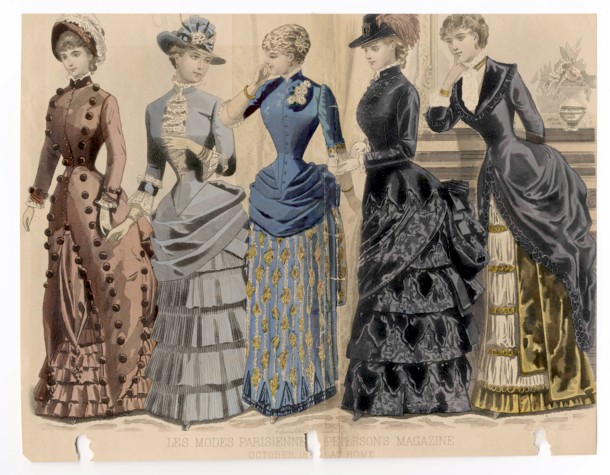 1883 – La Mode Parisienne |
|
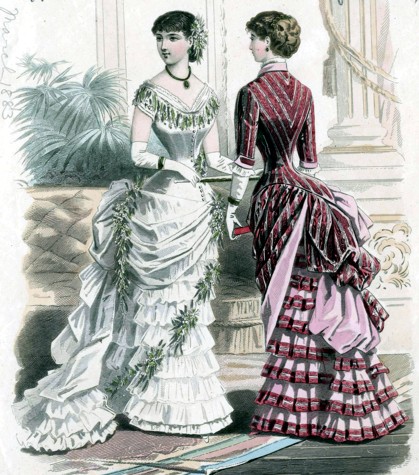 1883 – Journal Des Demoiselles |
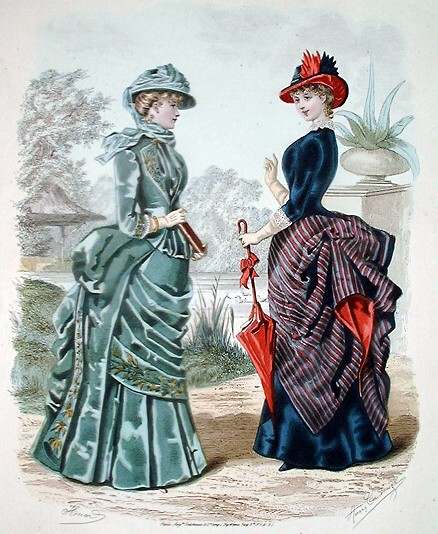 1883 – La Mode Parisienne |
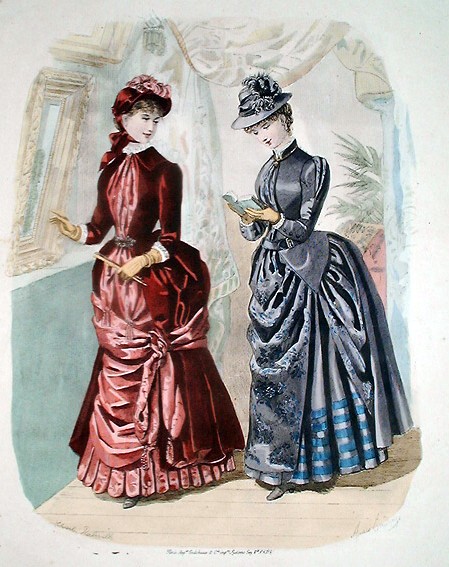 1883 – La Mode Parisienne |
| Evening dresses are all high on the shoulder, and often without any sleeve.
The back draperies are usually lifted high into poufs. All skirts are floor length except very formal wear. |
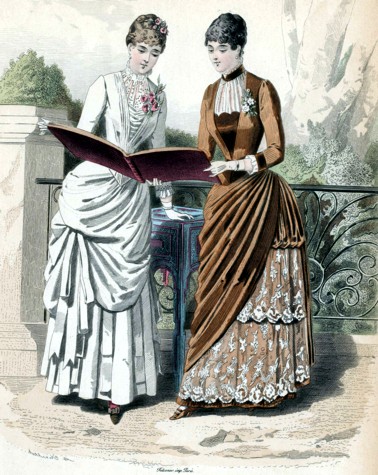 1883 – Journal Des Demoiselles |
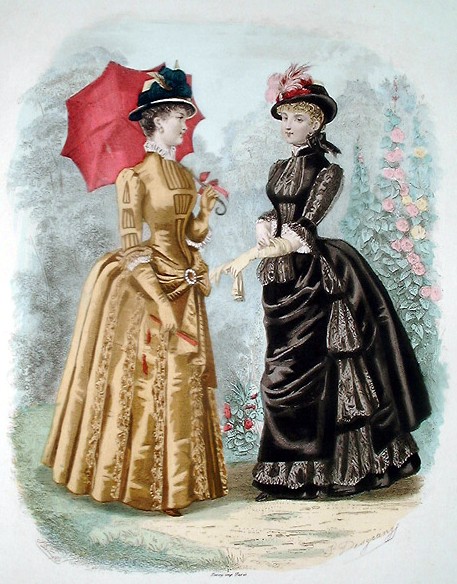 1883 – La Mode Parisienne |
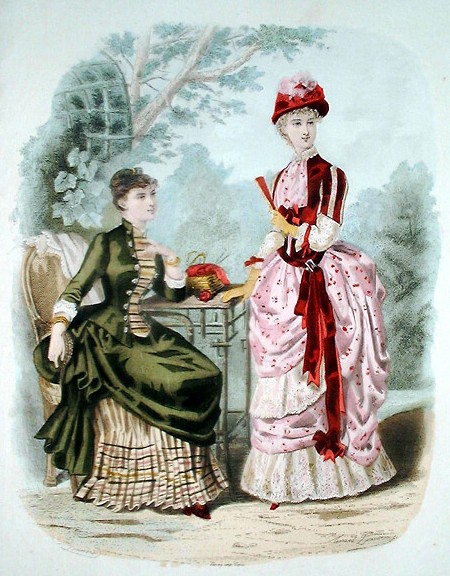 1884 – La Mode Parisienne |
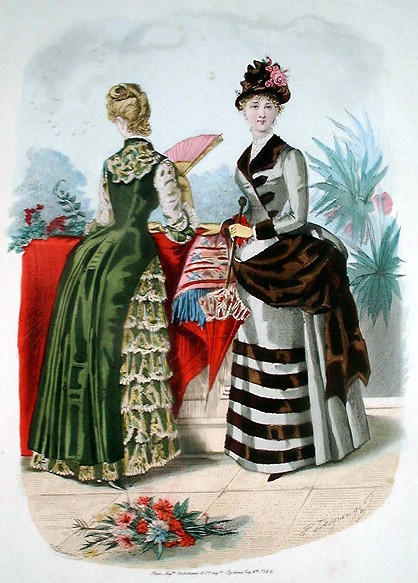 1884 – La Mode Parisienne |
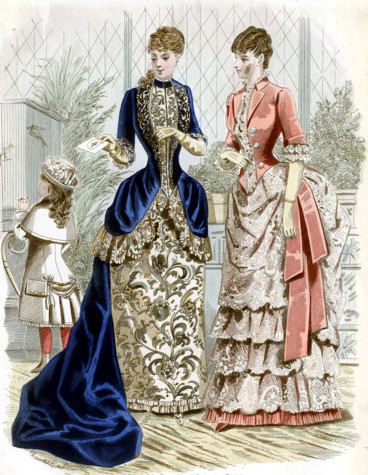 1884 – Magazin des Demoiselles |
| Asymmetrical lines are still very popular. The daytime neckline becomes very high, with a collar. Even at dinner, the neckline is more conservative. A more tailored look appears with shawl collars and reveres added to the bodices to simulate vests and jackets. The sleeve gains fullness near the shoulder, but remains fitted below. The bustle reaches maximum size in 1887-88, but soon after dwindles away to almost nothing by 1889. The swags and poufs give way to simpler and plainer skirts. As the skirts get narrower, the sleeve head starts to get larger; a foretelling of the huge sleeves of the 1890s. |
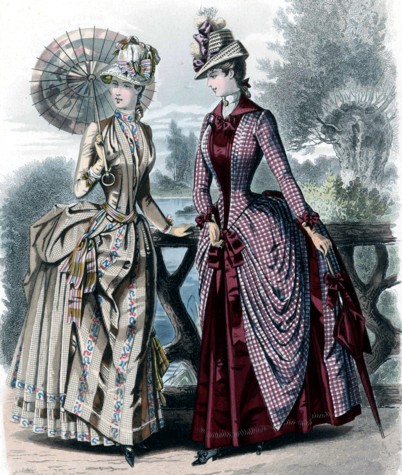 1886 June – Der Bazar |
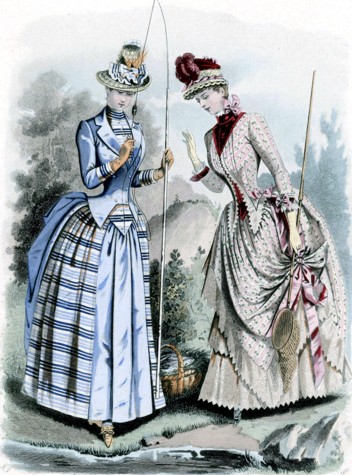 1886 July – Der Bazar |
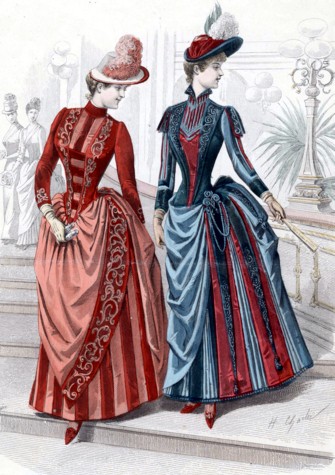 1887 – Dec La mode Francaise. |
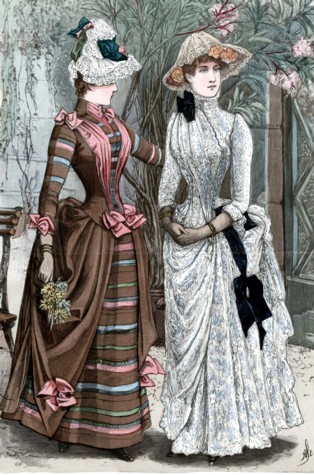 1887 – Dec La mode Francaise. |
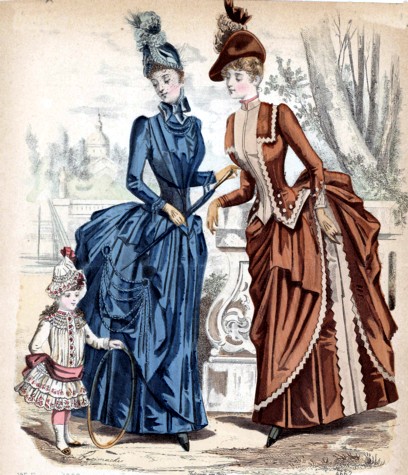 1888 Feb – Journal Des Demoiselles |
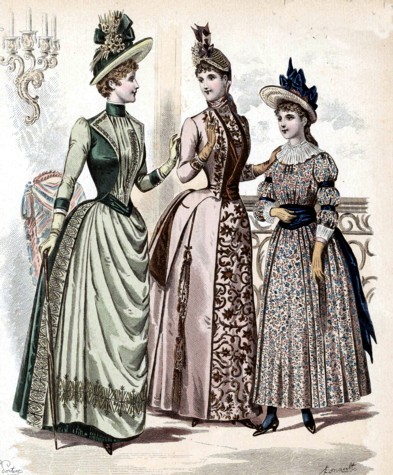 1888 Sept – Journal Des Demoiselles |
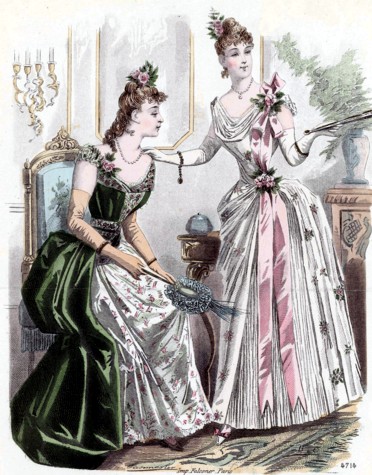 1889 Feb – Journal Des Demoiselles |
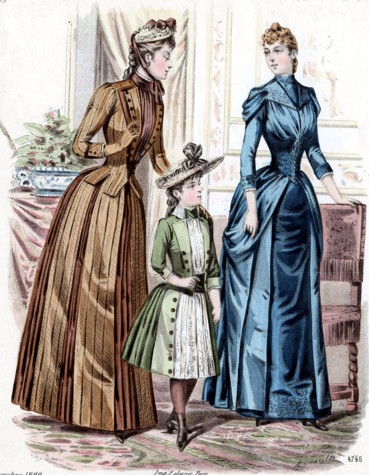 1889 Sept – Jounal des Demoiselles< |